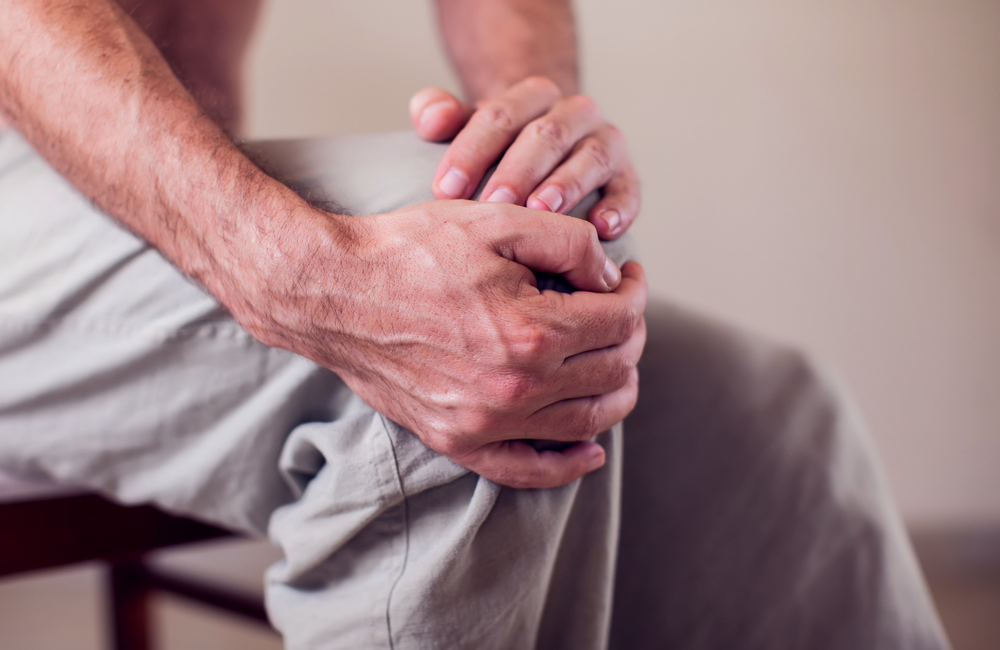
The pathway recommended for assessing the risk of major fracture in people living with HIV by the British HIV Association (BHIVA) may be inadequate, according to a new study from the Chelsea & Westminster Hospital in London.
People living with HIV are at greater risk of osteoporosis than their HIV-negative counterparts. Osteoporosis is the process in which bones lose density over time and are at increased risk of breaking (a fracture). HIV itself, certain HIV medications and risk factors that are more prevalent in people living with HIV are all thought to contribute to a higher risk of osteoporosis. Whilst a fracture to the forearm may be easily managed with little impact on everyday routine, a fracture of the hip or spine can be life changing. Current BHIVA guidelines suggest that all people living with HIV over fifty years of age are assessed using the Fracture Risk Assessment Tool (FRAX) to determine their risk of having a major fracture in the next ten years.
FRAX takes into account variables including age, gender, weight, height, previous fracture, family history of hip fracture, smoking, glucocorticoid (prescribed steroid) use, rheumatoid arthritis, secondary osteoporosis and alcohol use.
BHIVA recommend that anybody with a FRAX score of more than 10% should have a dual energy x-ray absorptiometry (DXA) scan. This scan uses x-rays to provide a number that reflects how dense an individual’s bones are. The FRAX tool can then be adjusted to include this result and give a more precise estimate of fracture risk.
This is in contrast to European AIDS Clinical Society guidelines that suggest in people living with HIV, every male over fifty years of age and all post-menopausal women should undergo a DXA scan as part of their ten year fracture risk estimate. If a person scores above a set threshold they are offered treatment that can prevent, and in some cases reverse, bone thinning. US guidelines have a similar approach.
The study
FRAX scores are not validated in people living with HIV and previously it has been shown that they underestimate the risk of a major fracture in this population. The team at Chelsea and Westminster undertook a study looking at the data from their patient cohort over the age of 50 to see if patients who had undergone DXA scanning that confirmed osteoporosis would have met the criteria for a DXA scan based on initial FRAX score alone.
Data for 744 people from a ten year period were analysed. Patients were mostly White and male, had undetectable viral loads and average CD4 counts of 661. Most patients had been exposed to tenofovir disoproxil fumarate with smaller numbers exposed to protease inhibitors and the older drugs didanosine and stavudine. Smoking (34%), low vitamin D levels (25%), menopause (78% of female patients) and diabetes (5.8%) were other clinical risk factors present in the cohort.
Osteoporosis was diagnosed via DXA in 91 of 744 patients (12.2%), mostly at the spine but also at the top of the femur (less dense bones here could increase the risk of a hip fracture), with 17 patients having osteoporosis at both. When accounting for all the different risk factors, a low BMI as well as older age (only for osteoporosis at the femur) were significantly associated with an increased risk of osteoporosis in this population.
The main aim of the study was to see whether the FRAX score identified patients with osteoporosis. In this regard, 90 out of 91 patients with DXA-confirmed osteoporosis had a “normal” FRAX score - in other words, were deemed to have a less than 10% chance of a major fracture in the next ten years. These patients under current UK guidelines would therefore not have gone on to have a DXA scan. The FRAX system allows for clinicians to enter a blanket “secondary risk factor for osteoporosis” into the calculation. When FRAX scores were re-calculated using HIV as a risk factor, together with the known DXA results,15 of the 744 patients were deemed to have a major fracture risk of more than 10%. Of these patients, nine had confirmed osteoporosis on the DXA scan.
When looking at the FRAX score’s overall ability to correctly detect whether a person living with HIV may have osteoporosis – i.e. the sensitivity, it was reported as 50%. This means the test is no better at predicting whether someone will have osteoporosis than tossing a coin. The sensitivity increased slightly to 60% when taking into account DXA scanning and using HIV as a secondary major risk factor.
Discussion
The FRAX scoring system is not meant to establish whether someone has osteoporosis, but is meant to be a tool to determine their risk of sustaining a major fracture. If however the FRAX score is used as a proxy assessment for osteoporosis, this study would suggest that it underestimates the risk of having thinner bones in a considerable number of people with HIV, rendering it a somewhat redundant in this context.
There are limitations to this study: the authors acknowledge that it didn’t look at actual numbers of fractures in the population and that the FRAX score is intended to qualify the risk of fracture, not risk of osteoporosis. (Many of the factors in the FRAX score such as long term steroid treatment and age are independent risk factors for fracture, even if someone’s bones have a normal density on DXA). The study participants were mainly White men and thus it’s hard to determine whether the FRAX score would be of greater or lesser utility in people of different sex or ethnicity.
The above limitations accounted for, it seems the take home message is that though a relationship between osteoporosis and HIV is established, current tools to predict which patients may need treatment to prevent fractures are currently lacking. More research is needed to establish to what extent HIV increases an individual’s risk of a major fracture so this can be formally considered in a FRAX scoring system or similar. Whilst such grey areas exist in our understanding, it would seem that gathering all the information necessary – i.e. through the routine use of DXA scanning – to identify patients with osteoporosis would be a logical step in the management of an ageing population of people living with HIV.
Mazzitelli M et al. FRAX Assessment in People Ageing with HIV. HIV Medicine, online ahead of print, 19 September 2021.

